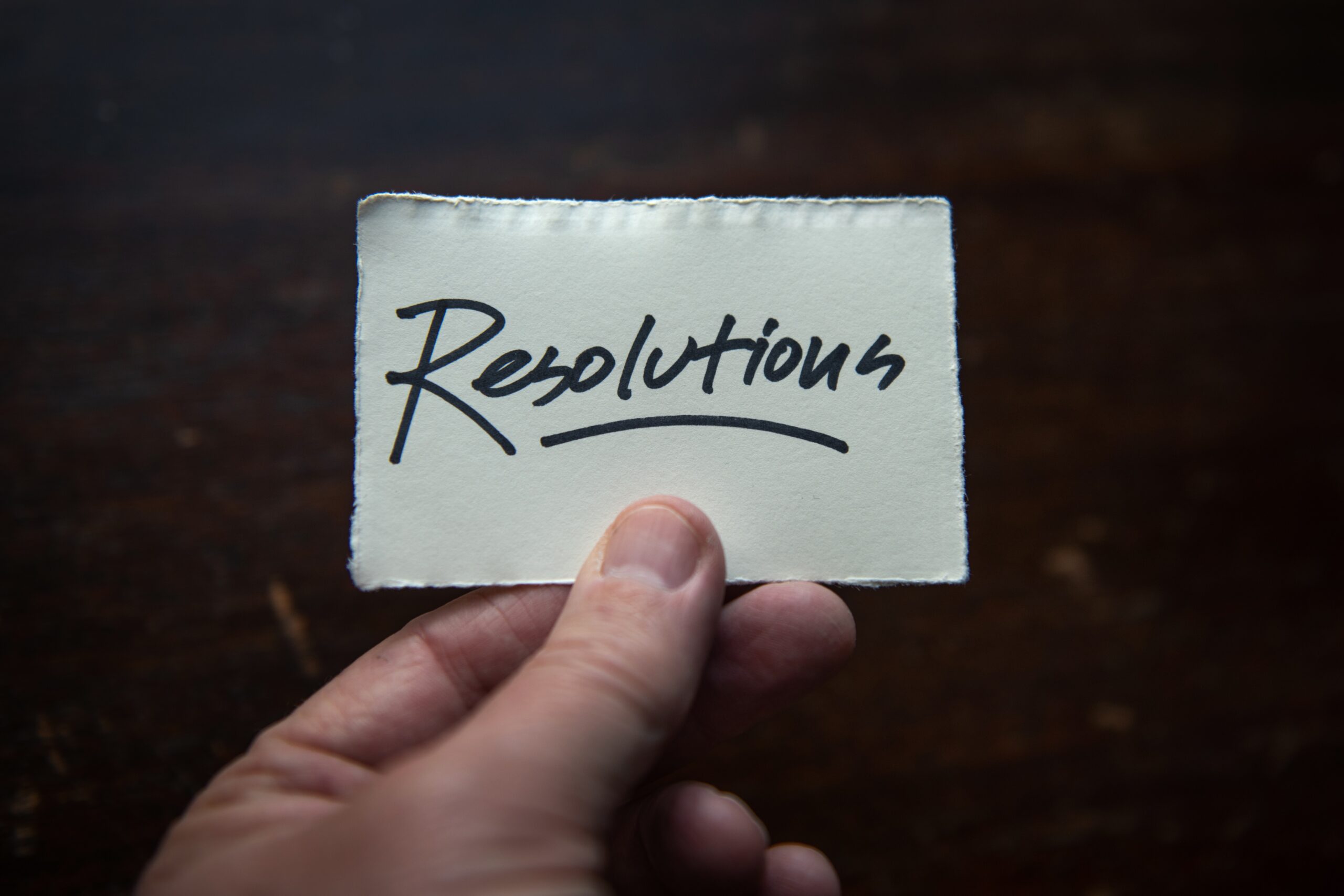Your cart is currently empty!

Every year as the calendar turns to January, millions of people take time to reflect on the previous year and set New Year’s resolutions to improve something in their lives. Losing weight, exercising more, finding a new job, and saving money consistently top the list of popular resolutions. However the hard truth is that the vast majority of people fail to achieve their lofty annual goals. Research shows that only around 10 percent of people who make New Year’s resolutions actually stick to them over the course of a full year.

With such dismal success rates, it begs the question – why do we even bother making New Year’s resolutions in the first place? And more importantly, what are some alternative approaches we can take instead to drive positive change? The traditional resolution may be comforting in its simplicity – “lose 20 pounds” or “read more books.” But creating lasting change requires self-reflection, self-awareness, and a willingness to continually iterate our systems and processes based on what is actually working.
The great news is that there are alternative goal setting approaches that embrace this adaptability and have been proven to work better than the typical New Year’s resolution. These methods focus less on talking about change and more on creating the structures and consistent habits needed to drive change over the long run.
In this guide, we will explore five alternative goal setting strategies for the new year:
- Getting clarity on your “why”
- Optimizing what’s already working
- Fear setting
- Creating systems
- Building better habits
Implementing just one of these alternatives can set you up for more success than relying on motivation and ambition alone. By taking small, consistent actions backed by thoughtful systems and processes, you can turn aspirations into realities in 2024.
Get Clarity on Your “Why”
Before rushing to set ambitious goals for the new year, it’s important to first get very clear on why you want to achieve those goals in the first place.
If your purpose is not clear, then at the first sign of when the going gets tough you’ll drop your goal and lose any traction you may have built. Understanding your deeper motivations and values will give you the fuel and inspiration needed to stick to your goals when (not if) motivation runs low.
There are a few useful exercises that can help uncover your core “why”:
Morning Pages
Author Julia Cameron describes Morning Pages as three pages of stream-of-consciousness writing done first thing in the morning. The idea is to write freely without overthinking on those pages – about anything and everything crossing your mind. Doing this daily helps provoke thoughts, bring clarity, prioritize your day, and synchronize your mind.

To do morning pages, set aside about 15-20 minutes when you first wake up. Grab a journal or notebook and date the top of the page. Then write three pages of whatever comes to mind – your thoughts, feelings, ideas, concerns, plans, dreams etc. Don’t worry about grammar, spelling or censoring yourself. Just get whatever is in your head down on paper. Feel free to switch topics frequently. Morning pages are just meant to be a brain dump to unclog your mind.
The act of writing morning pages daily has surprising benefits. It can help identify buried emotions and patterns of thinking you weren’t fully aware of. Over time, it brings self-awareness of what issues might be affecting you subconsciously.
Morning pages also encourage creativity, new perspectives and clarity about situations in your life. Just the ritual of taking time for unfiltered self-expression each morning can set you up for a stable, focused mindset to start your day.
This practice can help you hone in on the underlying values, beliefs and key motivators that give you a deeper sense of purpose. This can help you get clarity on your unique ‘why.’
Seven Levels Deep
This exercise involves asking yourself “why” seven times to get to the heart of what drives you. Start with the goal you want to achieve. Ask yourself why that goal is important to you and write it down. Take that answer and ask why again. Repeat this process until you uncover your deepest motivations after seven whys.
Getting clear on your fundamental reason for wanting something gives you an “anchor” to hold onto when the path gets difficult.

For example, you might identify “losing 30 pounds” as your goal. You then ask why is that important to you. Perhaps your answer is “to fit into my old clothes.” Ask why again – “to feel more confident in how I look”. Ask why again – “to boost my self-esteem.” Keep repeating this asking yourself why each previous answer matters until you get to the core emotional driver on the seventh why.
This exercise forces introspection into what experiences, beliefs and values are truly pushing you towards a goal. By uncovering the deepest “why”, you can anchor yourself emotionally to stay motivated despite obstacles. Having clarity of purpose connected to your larger life narrative is a key ingredient for persevering when the path to your goals gets challenging.
100 Words to Live By
Write out exactly 100 words that you want to live your life by. This forces you to think carefully about what values are most important to you. Having clarity on the top principles guiding your life allows you to set goals and make decisions aligned with your core beliefs. Review and reflect on these 100 words when you need guidance or inspiration.
This exercise encourages you to distill your values and principles down to the essence – just 100 words that capture what matters most. Think of it as the code or constitution by which you want to live your life. What values do you deem most important – honesty, family, growth, creativity, spirituality? What principles guide your decision making – have faith, be curious, persevere, stay positive?
The 100 word exercise is meant to be revisited and edited over time as your values shift. Having this touchstone document that lays out your personal values and guiding philosophies in your own words can steer you towards fulfillment and purpose in all areas of life. Refer back to it as you set new goals each year to ensure they align with what you most care about.
Taking the time for self-reflection by doing one or more of these exercises will reveal motivations you may not have even been consciously aware of. And having this level of insight will allow you to set more meaningful goals and remain committed to seeing them through when obstacles arise. Your “why” is the fuel to persist.
My 100 Words:
100 Words To Live by Bilal A.
Your mind, body and spirit are sacred, nurture them.
Share the gifts you were given with the world.
Build & foster strong and lasting relationships.
Talk less and listen more. Assume nothing.
Ask more questions. Stand up for what you believe in.
Choose love before hate.
It’s ok to be vulnerable and it’s ok to be wrong.
Don’t be afraid of asking for what you truly want.
Trust yourself and be clear and confident.
Be grateful. Always be present in the moment.
Build, measure & learn, then repeat.
Ideas don’t work unless you do.
Fear is temporary, regret is forever.

Optimize What’s Working
Rather than only focusing on what’s not working or needs to be “fixed” in the new year, an alternative approach is to optimize and build upon what already is working well. Take an inventory of the habits, routines, activities and mindsets that served you this past year. Identify the strengths to leverage and positive momentum to accelerate even further with targeted improvements.
The concept of “positive psychology” emphasizes that enhancing well-being involves recognizing our talents, achievements and ability to thrive. This perspective aligned to goal setting focuses first on amplifying strengths vs just fighting flaws. The approach includes:
1. Catalog the Positives of this Past Year:
What habits did I maintain consistently that I’m proud of? What healthy routines did I incorporate? When did I push myself in a new direction? What skills did I improve? What relationships did I nurture?
Recall the moments, no matter how small, that gave you a sense of accomplishment, progress and meaning this past year. Appreciate the capabilities you demonstrated. This accounting builds gratitude and self-confidence to propel meaningful change by realizing – “I did hard things this past year, I can do hard things this coming year to improve.”
2. Quantify Key Habits to Optimize:
Now examine that list of positives and categorize each as:
– Physical health (exercise, nutrition etc)
– Mental wellbeing (mindset, knowledge gain etc)
– Relationships (friendships, family etc)
– Skill development (learning, creating etc)
– Other life areas important to you
The categories aligned to your unique values should rise to the top. Circle the 2-3 habits/areas you want to optimize and quantify key metrics that move the needle.
For example, if consistent exercise is a priority area, set goals for your weekly workout schedule, miles/steps per week, strength training routines etc.
Quantifying establishes a baseline to incrementally increase.
3. Systematize Your Process of Improvement
The next step is to systematize each habit to track optimizing progress.
For exercise, that might mean:
– Schedule set days/times each week
– Log activity in app
– Join online community
– Designate gear/clothes
– Meal prep to fuel workouts
Create the conditions and routine that support the habit. The system around the positive habit matters just as much, if not more, than the intensity of your resolution around it.
4. Find Accountability Partners
Share the habits you want to work on with family members or friends who you feel will support you and keep you accountable. Their occasional check-ins on your progress with exercise/diet/meditation can bolster motivation and accountability.

If appropriate, share the metrics you’re tracking related to the positive changes you’re focused on enhancing. For example, letting your spouse know your step count goals and weekly achievement towards it.
Accountability partners provide external validation during moments of wavering internal motivation. Even if the support is just periodic interest rather than hardcore monitoring, knowing someone else is invested in your improvement goals lends helpful psychological incentive.
One real important note is to pick someone who will be an honest accountability partner. One thing you don’t want is to share for the sake of getting external validation which will give you a momentary dopamine rush that could replace the actual progress you’re trying to make. Refrain from posting progress on social media and other outlets which can seem like you’re keeping yourself accountable, but may be just a secret way for you to seek validation outside. Remember, you’re working on yourself FOR yourself.
5. Amplify Small Wins
After quantifying the positive changes you want to achieve and systemizing the process to do so, focus on celebrating small wins along the way.
Using our fitness example, buy yourself new running shoes after hitting certain milestones. Or enjoy a relaxing bubble bath after you’ve had a particular intense week of workouts you powered through.
Small wins accumulate into big transformation. Savoring the mini doses of progress energizes you to persevere. The pride and confidence compound until your elevated baseline inspires brand new goals to tackle. Appreciating how far you’ve come offers the motivation to believe how much further you can go.
While many default to criticism and negative energy to try achieving their resolution, the positive psychology approach first builds on what already works. Then through incremental progress backed by systems and accountability, existing strengths become amplified into greater personal growth and change.
With this alternative, rather than taking on wholly new intimidating habits, you get to double down on what you already naturally do well. Your identity begins to shift not based on shallow motivation but instead through actual achievement. Consistent small wins driven by your values accumulate into remarkable transformation over years not just weeks.
In summary, an effective alternative goal setting approach for the new year includes these core steps:
1) Catalog existing positive habits and appreciate them
2) Quantify and set metric-based goals around top 2-3 habits aligned to your values
3) Systematize routines and conditions to better support habits
4) Secure accountability partners
5) Celebrate small wins
This process of optimizing previous strengths will set you up for positive, lasting change more effectively than solely relying on the motivation burst New Year’s resolutions temporarily provide before ultimately fizzling out.

Fear Setting
Fear is one of the biggest barriers that holds us back from achieving our goals and ambitions. It’s what stops us from going for the big New Years Resolutions. Fear of failure, fear of the unknown, fear that we’re not good enough – these emotional obstacles constrain our thinking and action when we allow them to fester unconsciously.
An alternative goal setting approach called “fear setting” provides a strategic framework to identify, mitigate and overcome fears proactively. Explicitly defining worries related to a specific goal allows you to develop contingency plans should those fears be realized. Visualizing worst case scenarios is oddly comforting because it provides permission to fail while building the capacity to navigate adversity.
This method termed “fear setting” was coined by entrepreneur Tim Ferriss and is the opposite of typical goal setting. Instead of deciding on an objective and making loose plans to accomplish it, you start by defining what you don’t want to happen which enables solutions and mental resilience should it occur.
Fear Setting Process
The exercise involves going through four steps on paper that reorients your mindset positively toward embracing uncomfortable change.
1. Define your fears
2. Prevent what you can
3. Repair what you can’t prevent
4. Opportunity Costs
5. Reframe failure as iteration

1. Define Your Fears
– Clearly define the goal you want to accomplish whether career change, new skill development, starting a business etc. Write it at the top of the page.
– Underneath, create three columns titled “Define”, “Prevent” and “Repair.”
– In the Define column, comprehensively list out any and all fears you have about trying to achieve your stated goal. Minimum 10 fears but allow yourself to capture every worry, reasonable or not. Common categories include failure itself, wasted time/money, being judged by others, lack of ability, upheaval to lifestyle.
– Identifying root fears is critical… so in this step resist censoring even seemingly exaggerated risks. The full spectrum of fears left unaddressed can unconsciously sabotage your motivations in unseen ways later.
2. Prevent What You Can
– For each fear captured in the Define column, actively brainstorm any and all steps you can take to prevent that potential negative outcome from happening, reasonable or not. List preventative actions in the middle column.
– For example, common fears around public speaking include stumbling over words, negative judgment, and appearances. Potential prevent actions could be rehearsing repeatedly alone and in front of others, learning recovery tactics, caring less about judgments from others, dressing intentionally sharply.
– Minimize the possibility of fears being realized by getting creative with preventative countermeasures within your control. This builds confidence through preparation.
3. Repair What Can’t Be Prevented
– Despite best efforts, mishaps or the manifestation of fears could still occur. In this step, outline plans to manage worst case scenarios should they happen.
– Identify key people in your life who can provide emotional support should failure or embarrassment occur. Consider networking to find mentors familiar with your goals who can provide guidance if faced with struggles. Research common setbacks related to your objective implement repairs/course corrections top of mind.
– An example around new skill building like learning guitar – register for lessons, leave contact info for computer support to troubleshoot gear issues, purchase extra downloads of tutorials to augment learning.
4. Calculate Opportunity Costs
After defining fears and prevention/repair tactics, the next step is assessing potential upside should you pursue the goal, even if partial success.
On a second page, outline possible benefits that could unfold by taking action – new skills gained, relationships built, doors opened. Score each from 1-10 on potential positive impact.

This highlights that some progress on stretch goals still accrues value like increased capabilities, courage and clarity. Framing “failures” as data evidencing areas needing refinement encourages resilience.
Equally crucial is the final page quantifying inaction’s compounding costs on wellbeing and growth. Project across three columns – 6 months, 1 year, 3 years – specific consequences from maintaining status quo on relationships, finances, purpose etc.
Visualizing lost opportunities and emotional turmoil from avoidance counters natural tendency to view change as inherently riskier than stability. Chronic discontentement and missed potential pile up.

Together these exercises contrast what is gained, even through incremental progress when fears confronted, versus accumulating costs of paralysis from elusive “perfect” timing. Taking action leads to iterative improvement while inaction’s downward spiral persists.
This expansive analysis breeds proactive motivation. Once all angles weighed – imagined worst case scenarios, upside potential and especially massive price of standing still – fear and uncertainty reduce, replaced by informed eagerness to pragmatically move forward imperfectly.
5. Reframe Failure as Iteration
– The final step after pouring heart and soul into fear setting is to frame missteps that will inevitably happen as part of the iterative process not permanent condemnation. Accomplished people across industries cite numerous failures that expanded their capacity before later success.
– Setbacks provide invaluable learning about flawed assumptions, knowledge/skill gaps, infrastructure weaknesses and more. Each iteration gets you closer to the target through wisdom gained if perceived positively.
Reframing Your Fears
Running through this thorough fear setting exercise accomplishes a couple benefits. First, explicit awareness of specific fears allows you to thoughtfully allay as many worries as possible on the front-end rather than let anxiety implicitly limit behaviors down the road at pivotal moments. Seeing preventative measures documented builds confidence.
Just as importantly, realizing no matter how prepared, failure of some degree is assured, provides the emotional seasoning to view it as data rather than self-judgment when you fall short. Knowing you purposefully envisioned worst case scenarios to come up with contingency plans gives you permission to falter and correct course. That mental freedom releases inhibition, allowing full commitment rather than tentative procrastination. That’s why fear setting has proven so effective for many. That proactive agency over imagining pitfalls – prevented or repaired – lends itself to acting boldly aligned with growth mindset view of failures as fuel for future success when (not if) encountered.

Create Systems
When aspiring towards goals for the new year, a common trap is to rely solely on motivation and force of will to form new habits. But understanding human psychology, motivation is a finite resource that ebbs and flows. Systems and environmental conditions that support positive habits are more sustainable drivers over the long run.
An alternative goal setting approach is to systematically build infrastructure to enable the behavioral changes you want rather than attempting to push harder through repeated effort alone. Creating the ecosystem for habits to thrive requires upfront work but ultimately reduces friction and energy expenditure over time.

View Your Life Holistically
The first key mindset shift when creating systems is to take a holistic view of your life. Any area of change does not exist in isolation but rather builds upon or borrows from other domains.
For example, improving fitness requires better sleep habits, nutrition planning, mental resilience and time management calibration. A business venture needs to leverage existing technical skills, social network, project management experience and emotional intelligence.
Therefore, intentionally crafting lifestyle architecture that structures routines, relationships and environment around your resolution sets the stage for sustainable success.
Steps for Creating Systems
The process involves five phases:
1. Reflect on Areas for Improvement
2 Anything automated delivers consistent value 24/7
3. Map Out Processes
4. Systematize
5. Iterate
1. Reflect on Areas for Improvement
Consider your various life domains – health, career, relationships, personal growth, recreation etc. Across those categories, reflect on 2-3 areas most important for you to improve.
Within priority areas, outline current struggles. Where do you lack systems and consistency? Which behaviors do you want to modify? What exact milestones signal progress?
Be specific in calling out needs for change while framed constructively to preserve current strengths.
2. Automate Where Possible
Across highlighted areas requiring systems upgrades, analyze what aspects might be automated whether through tools, technology or delegation to drive consistency with less effort.
For example, fitness habits can utilize apps to schedule workouts automatically on calendar with reminder notifications, online communities for social motivation and gear like heart rate monitors to track progress.
Let’s say one of the goals is to eat more healthy. Maybe because of work you get home late and are not in the mood to cook and are ordering in a lot more than you’d like. How could you make it easy for yourself? Maybe you could ‘automate’ this by signing up for a healthy meal delivery service like HelloFresh.
Or if you like to cook but can’t during the work week, maybe you could batch your cooking for Sundays and meal prep for the work week. Maybe the solution is a combination of the two.

Repetitive tasks at work can be automated through rules in Outlook, macros in Excel or flows in Power Automate. Software eliminates human dependency for rote responsibilities.
Anything automated delivers consistent value 24/7. Identify manual tasks, no matter how small, that software or community support might handle to free mental bandwidth.
3. Map Out Processes
With priorities defined from reflection and automation identified where applicable, map out the detailed processes for positive habits you want to cement and negative habits you wish to avoid.
Visually diagram the step-by-step workflow needed to enable and sustain positive routines. Similarly, diagram vulnerabilities in typical processes that allow poor habits to manifest so they can be redesigned.
For example, building an exercise habit requires preparatory tasks days before each workout like packing gym bags, meal prepping appropriate fuel, laying out clothes, confirming social plans if accountability partner joins and so on. Process intricacies matter.
4. Systematize
This part will take some work. You want to think of the area you’re trying to improve and really break it down into a repeatable process. The new process can start off as a mind map, diagram or a checklist.
Really think about the process deeply and find places to do things faster and easier. If something can be outsourced, whether to a person or a software or a machine then think about that. In our eating healthy example, using a Meal delivery service is an example for outsourcing the meal prepping.
Maybe to make the cooking easier you think of prepping recipes and ingredients over the weekend and using an Alexa-enabled instant pot that you turn on remotely 2 hours before you come back from work. That is an example of automating the process using a machine.
With detailed processes clarified, intentionally implement associated structures and routines needed for desired habits to stick. Equally analyze and systematize around vulnerability points identified that disrupt positive habits. For instance, if late evening snacking sabotages nutrition goals, systematize end of day routines for better wind down preparedness.
If you determine smartphone distraction hampers learning goals, systematize periods of non-negotiable focus. Define what that means functionally – flight mode, apps closed, physically stored in drawer, timer for duration etc.
Get precise in strategically orchestrating conditions for victory balanced with protocols to prevent known pitfalls based on your unique needs.
5. Iterate
The power of systems thinking is that initial builds are just the beginning framework as iterations help you further optimize.
Actively track what environmental cues, processes and contingencies are working well. Note where systems degrade and fall apart. Diagnose the root cause then refine and re-engineer the original system / plan.
Collect ongoing feedback from others benefiting from habit changes to identify additional enhancement opportunities.
Be scientifically rigorous in observing outcomes while resisting emotionally charged setbacks. Each iteration evolves the system.
The creation and refinement of holistic life systems can feel daunting but visualizing the future benefits of aligned routines is worth the effort for compound results over years not just weeks.

Build Better Habits
When trying to change behaviors, most people overly rely on motivation and ambition to stick to resolutions. But the formula put forth by James Clear in his book “Atomic Habits” offers a more effective system for building habits by focusing small.
According to Clear, habits shape our lives more than any other force. They are the compound interest of self-improvement. The process behind habit formation follows a simple four-step loop called the habit loop: cue, craving, response & reward.
A cue triggers a craving, which motivates a response, which provides a reward, which satisfies the craving and reinforces the cue and response. It is a neurological feedback loop. This basic structure is the foundation behind any habit, good or bad.
Steps for Creating Good Habits:
1. Start Tiny
2. Make it Attractive
3. Make it Easy
4. Make it Satisfying
1. Start Tiny
The first step to effectively embedding a good habit is to start extremely small. Trying to change too many behaviors too quickly is likely to fail. Instead, master the basic first phase before considering adding more on top.
For example, if you want to establish a running habit, start by putting on your running shoes or driving to the gym. Commit to a 5 minute walk instead. Do the easiest first action, whatever naturally comes beforehand. The Gateway Habit establishes the path of least resistance by building on early success.
Tiny stepping stones stretch forward one bit at a time. Walk before you run. Achieve consistency first with easy wins like reading one page, lifting weights for 30 seconds or meditating during a commercial break. End goals feel impossible but today’s progress serves as a source of motivation.
I wanted to get back to working out after a 8 year hiatus. I started with committing to 3 pushups a day. I’m now up to 75 – 85 pushups. I would never have imagined doing this many pushups when I first started out. I would have been happy with 20. The initial 3 pushups got me going, and in a couple of weeks I was already up to 10 a day.
Start tiny. Get it done WITHOUT motivation.
2. Make it Attractive
The more attractive an opportunity is, the more likely it is to become habit-forming according to Clear. Making a behavior appealing is key. New habits should align to identity and connect to greater purpose rather than solely deliver utility.
Pairing a new habit with an existing habit or action you do on a daily basis makes it easy and attractive to add on. Stack your habits to make it easier and more attractive to make the change you need. For example, if you’re an avid Instagram user, making a commitment to do 5 pushups before you ‘instagram’ can be a great way to stack a good habit with an existing ‘attractive’ habit you already have.
Another example, view exercise as not just about weight loss but rather cementing an identity as a healthy productive person. Associate reading skills less with knowledge gain than becoming an engaging conversationalist. Enable behaviors worthy of who you wish to become. Stack existing habits with new ones.
3. Make it Easy
The central theme across building Atomic Habits is easiness. Eliminate any and all friction to embrace a behavior. The most productive people tilt the environment so minimal effort is required to maintain good habits.
That might mean preparing gym clothes, bag and shoes the night before so workouts feel more accessible for instance. For new leadership habits, schedule recurring time blocks for frequent opportunities to demonstrate emerging skills.

Habits only form through repetition. The easier they are to initiate, the faster the conditioning takes place until cues automatically trigger the routine. Reduce physical or mental barriers that hamper consistency. Outsource willpower to environmental architecture.
Know your weakness, and eliminate the weakness as best you can so that the path to success is as easy as can be.
4. Make it Satisfying
For long-term sustainability, the new habit must be rewarding. There is some positive feeling immediately or soon after conducting the behavior that delivers clarity that benefits clearly outweigh costs.
To build writing habits, end each short session by listing key insights captured. Feel emotional progress connecting thoughts to paper. For healthy food habits, savor flavors by closing eyes while slowly chewing each bite. Enjoy substantiveness of nourishing the body.
Leverage in-experience rewards when starting out new habits – feelings intrinsically generated by focusing attention on the process. If intrinsic validation is insufficient, add in minor external rewards that lend positive reinforcement about benefits.
Make it Last
By focusing small rather than big, attractive not just useful, easy instead of difficult, and satisfying through purpose over perfection, tiny gains made consistently can lead to remarkable transformations over time through the power of Atomic Habits.
Here is a draft conclusion to bring all the goal setting alternative sections together:
Conclusion
As the new year arrives, many default to well-intentioned but flawed New Year’s resolutions to drive change. However, relying solely on motivation without a supportive structure typically leads to lack of follow through. Just 8% of people actually achieve their annual lofty resolutions by year’s end.
Rather than willpower alone, establishing new positive habits and mindsets requires self-awareness, adaptable systems and consistency focusing small. Tiny gains made each day or week compound achieving miles more progress than sporadic bursts of intensity whenever ambition arises then fades again.
The approaches outlined across five alternative goal setting techniques each lend tools to sustainably evolve identity and capabilities in incremental harmony:
1. Clarifying your deeper why – purpose fuels perseverance when the path gets difficult. Understanding intrinsic motivations for desired change keeps priorities grounded to what matters most.
2. Optimizing existing strengths – cataloging current positives and strategically building upon them makes progress feel immediately achievable based on self-evident abilities.
3. Fear setting – counterintuitively planning worst case scenarios spurs preparation while lending permission should some failures still arise. Both realities breed proactive confidence.
4. Systems thinking – obsessing less about goals themselves and more on designing holistic supportive habits/conditions that enable and reward aligned behaviors.
5. Tiny habits – capitalizing on human psychology to latch new routines onto already familiar environmental triggers and emphasize early repetition towards identity evolution.
As the new year turns and instinct triggers reflections on change, question the value of overwhelming resolutions without infrastructure. Instead explore more thoughtful alternatives outlined here focused small on purposeful, positive habit formation one realistic win at a time. With that measured mindset, transformation awaits.